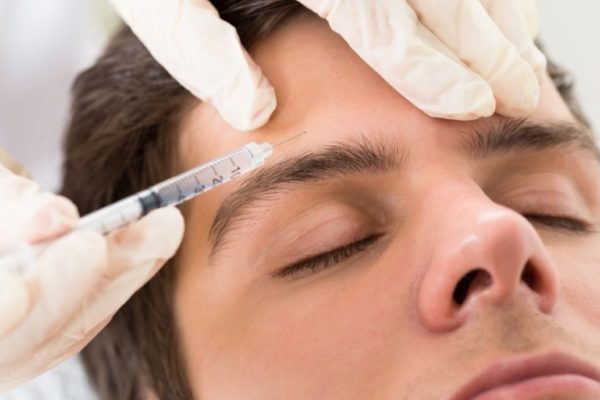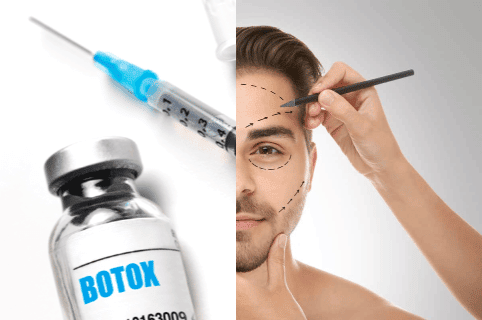Botox, often recognized for its ability to smooth out wrinkles, holds a surprising number of benefits beyond aesthetics. While its popularity in cosmetic procedures is undeniable, this versatile treatment offers a range of applications in the medical field as well. In this blog post, we’ll delve into six facts about Botox, exploring its diverse uses and shedding light on its potential beyond wrinkle reduction.
Facts about Botox Origins: From Medical Marvel to Beauty Booster
Contrary to popular belief, Botox’s journey began not in the realm of aesthetics, but in the field of medicine. The discovery of its potential for treating medical conditions dates back to the 1970s when scientists observed its ability to relax muscle spasms in the eyes. This paved the way for its use in treating various conditions like cervical dystonia (neck spasms) and strabismus (crossed eyes). In 2002, the FDA (Food and Drug Administration) officially approved Botox for cosmetic use, specifically for reducing frown lines between the eyebrows. This marked the beginning of its widespread adoption in the world of aesthetics.
Unveiling the Science: How Does Botox Work Its Magic?
Understanding the science behind Botox is crucial when exploring facts about Botox. Its effectiveness lies in its ability to target the neuromuscular junction, the point where nerve cells communicate with muscles. The active ingredient in Botox, botulinum toxin type A, works by temporarily blocking the release of acetylcholine, a neurotransmitter responsible for muscle contraction. This temporary blockade leads to relaxation of the targeted muscles, resulting in smoother skin in the context of cosmetic use and reduced muscle activity in the case of medical applications.

Beyond Wrinkles: Exploring Botox’s Therapeutic Applications
Botox’s impact extends far beyond its cosmetic applications. Its ability to relax muscles makes it a valuable tool in treating various medical conditions. Here are some notable examples:
Chronic pain: Studies have shown the effectiveness of Botox injections in relieving chronic pain, particularly in cases of neck pain, migraines, and tension headaches.
Hyperhidrosis (excessive sweating): Botox injections can significantly reduce sweating in areas like the underarms, palms, and soles of the feet, offering relief for individuals struggling with excessive sweating.
Overactive bladder: Botox injections can help manage overactive bladder symptoms by relaxing the bladder muscles, leading to improved bladder control.
Neurological conditions: Botox has shown potential in managing various neurological conditions like cerebral palsy and dystonia, offering relief from muscle stiffness and abnormal movements.
Safety First: Addressing Concerns and Highlighting Safe Practices
While minimally invasive, Botox injections are still a medical procedure, and it’s crucial to prioritize safety. Here are some key points to remember when considering facts about Botox and its safety:
Seek a qualified professional: Always choose a board-certified dermatologist, plastic surgeon, or neurologist with experience in administering Botox injections.
Discuss your medical history: Be transparent about your medical history and any medications you’re taking to ensure compatibility with the treatment.
Understand potential side effects: Like any medical procedure, Botox can have side effects, though usually mild and temporary. These can include temporary bruising, swelling, redness, and headache. Discuss these potential side effects with your healthcare provider beforehand.
A Beacon of Hope: Exploring Botox’s Potential in Treating Depression
Botox makes you happier because you can look younger with this treatment. But it can do more to lift your moods. A recent study shows that it can be helpful for treating depression as well. This is because it can relax the facial muscles and disrupt the negative feedback they give to your brain. As a result, it curbs the development of negative emotions. The studies, however, are still in the preliminary phase.

Breaking Gender Barriers: The Rise of Botox Among Men
The notion that Botox is solely a woman’s concern is a misconception. Many facts about Botox highlight the increasing popularity among men. Men are increasingly seeking out Botox treatments to address concerns about wrinkles, frown lines, and crow’s feet. The number of men opting for Botox injections has seen a significant rise in recent years, reflecting a growing acceptance of aesthetic procedures among men and their desire to maintain a youthful appearance.

Want to know a few more surprising alternative uses? Check out this blog from Anderson Sobel Cosmetic
By understanding these lesser-known facts about Botox, you gain a deeper appreciation for its versatility and potential benefits. It’s crucial to remember that while Botox offers a range of applications, it’s not a one-size-fits-all solution. Consulting with a qualified healthcare professional is essential to determine if Botox is the right choice for you and to ensure a safe and effective treatment experience.






I never knew that botox could help relieve chronic pain and can even help treat migraines. I’ve been prone to getting migraines and it’s been pretty tough to manage over the years. Maybe I should look into botox treatments to help me with that.
I have a friend who has found success in using botox for her migraines.